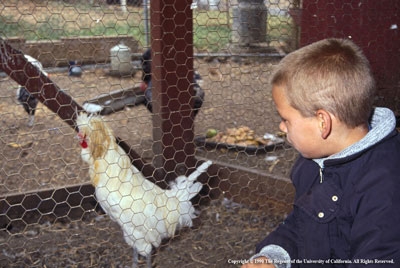Posts Tagged: Salmonella
Americans now less likely to pick up turkey burgers
The salmonella outbreak that prompted the recall of 36 million pounds of ground turkey is making consumers wary of a meat that many turned to as a safer, healthier alternative to ground beef, according to an article in the Sacramento Bee. Cargill Meats' decision last Wednesday to call back the product is one of the largest meat recalls in history.
The Centers for Disease Control and Prevention held a press briefing Aug. 4 reporting that they are aware of 78 cases of salmonella illness associated with ground turkey between March 1 and Aug. 3, 2011, in 26 states. There has been one related death - a 65-year-old Sacramento County woman.
Of the 78 victims reported to the CDC, 22 have been hospitalized, a rate higher than is typical with salmonella infections, said Dr. Chris Braden, director of the CDC Division of Foodborne, Waterborne and Environmental Diseases, during the briefing.
"We’re working to explore why this may be," Braden said. "One possible reason is that the outbreak strain is resistant to several antibiotics, including ampicillin, tetracycline and streptomycin. This antibiotic resistance may increase the risk of hospitalization and can sometimes lead to treatment failure."
UC Cooperative Extension food science specialist Christine Bruhn told the Sacramento Bee that, compared with dangerous strains of E. coli, salmonella "is a pathogen to be feared even more."
"There are more deaths every year from this organism than the E. coli that came to everyone's attention in the 1990s with the Jack in the Box outbreak," Bruhn was quoted.
Bruhn suggested that consumers check the temperature of cooked turkey before serving it.
"If you don't have a (meat) thermometer, go to the grocery store and get one and stick it in at an angle," Bruhn said.
Washing hands and anything else that might have touched uncooked meat is also critical.
"Wash your hands, wash the faucet, the top of the soap dispenser, the fridge handle," Bruhn said.

Even if turkey is contaminated, cooking to 160 degrees through and through ensures the meat is safe.
Any chicken can shed salmonella
Last month's enormous egg recall continues to generate news coverage about efforts to keep salmonella-contaminated eggs out of the U.S. food supply.
Experts quoted in a Los Angeles Times story published yesterday agreed that salmonella contamination can happen in any egg production system - large operations, small family farms or in the backyard. Chickens infected with salmonella shed the pathogen in their feces, which can contaminate the egg shell. In rare instances, salmonella infects a hen's ovaries and can end up inside the eggs she lays, the article said.
A Texas A&M University professor said eggs from large-scale producers should, theoretically, be safer because they are subject to state and federal regulations requiring inspections and regular testing for pathogens, including salmonella.
A Louisiana State University professor said the cages on commercial farms have slanted bottoms so eggs roll out right after they're laid, making it less likely they will come in contact with hen droppings.
Michele Jay-Russell, food safety specialist at the Western Institute for Food Safety and Security at UC Davis, told reporter Elena Conis when a foodborne illness breaks out in a large commercial concern, the problem becomes a huge, national problem very quickly. But that doesn't mean smaller-scale production is safer.
The article cited two studies comparing the occurrence of salmonella in free-range and conventionally produced eggs:
- A 1996 study published in the journal Avian Disease found higher levels of a specific type of salmonella in free-range compared to caged birds.
- A 2004 study conducted by researchers at the Poultry Microbiological Safety Research Unit at the Richard B. Russell Agricultural Research Center in Athens, Ga., found no difference in salmonella levels in free-range chickens compared to conventionally raised chickens.

Backyard producers should also take precautions to avoid foodborne illness.
Egg recall collides with California's Prop 2
As producers and government agencies continue to investigate last month's enormous recall of Iowa-produced eggs, California egg farmers are pondering whether new rules that will govern the state's hen houses will play a role in preventing or exacerbating egg-borne illness, said an article in the San Francisco Chronicle.
Proposition 2, enacted by a wide margin of California voters in 2008, will require egg producers to provide adequate room for their hens to turn around freely, lie down, stand up and fully extend their limbs.
A Humane Society of the United States spokesperson told Chron reporter Carolyn Lockhead that the evidence is "very clear" that caging laying hens increases the risk of salmonella. However, Ralph Ernst, extension poultry specialist emeritus at UC Davis, who helped write California's voluntary egg production rules, told her that cages "are more sanitary than any other housing system, period."
A farmer quoted in the story said the caged environment separates the birds from their feces.
"In a cage-free environment you do not do that," Petaluma farmer Arnie Riebli said. "You allow the birds to walk in it and you allow the birds to eat it. Believe me, all you're doing is feeding them bacteria. Would you allow a small child to play in his excrement or eat his excrement?"
How regulators will interpret and enforce Prop 2's requirements are still unclear. Some farmers believe larger, "furnished" cages will be allowed.
Dan Sumner, director of the UC Agricultural Issues Center, said there is no reason to think that cages have any specific effect on the food safety aspect of the eggs.
"Cage-free is probably more dangerous when it comes to salmonella," Sumner was quoted.
Salmonella scares roil consumers
Even though Salmonella scares are reverberating in the news media, UC Davis Cooperative Extension food safety specialist Linda Harris says that, overall, the nation's food supply is safe.
Comments from Harris, a food-safety microbiologist at the Western Institute for Food Safety and Security at UC Davis, appeared in a story by Barbara Anderson in today's Fresno Bee.
"I would hate for consumers to approach the grocery store with trepidation," Harris was quoted in a story published today. Most of the food in grocery stores, she told the reporter, has been processed in some way that reduces or eliminates Salmonella, she said.
However, the story outlined how easily Salmonella bacteria can makes their way into the food chain. The bacteria flourish in soil and water and can survive in a dry environment. They can be on almost any food, and just a few bacteria can make someone ill. Salmonella is the most common cause of foodborne illnesses nationwide, but it is still relatively rare.
It is now easier for health investigators to recognize a salmonella outbreak because of advances in DNA technology.
"We have better methods to tease out outbreaks that previously would have gone unrecognized," Harris was quoted.
Salmonella rears its ugly head in California
Bad news for pistachio farmers, processors and consumers alike - yesterday the U.S. Food and Drug Administration recommended that consumers avoid eating pistachios and products made from pistachios because of reports of Salmonella contamination. The story was reported in numerous media outlets, including US News & World Report.
The contamination came to light when Kraft Foods "Back to Nature" trail mix was found to be tainted with Salmonella. Kraft traced the contamination to Setton Pistachio in Terra Bella, Calif. The company immediately stopped distributing pistachios and is recalling about 1 million pounds of roasted in-shell nuts, according to an FDA news release.
Also yesterday, the Sacramento Bee reported that state and federal health officials are investigating a Bay Area company whose spice products have been linked to a recent outbreak of Salmonella in 15 California counties. Bee writers Niesha Lofing and Darrell Smith spoke to UC Davis Cooperative Extension food safety specialist Linda Harris about the recent spate of Salmonella scares. She said Salmonella bacteria can survive in dry goods such as spices and dog treats
"It's true that to multiply, (bacteria) need warmth and moisture and nutrients," Harris was quoted. "But what most people don't recognize is when you don't have enough moisture, bacteria can survive. … Salmonella is well-known for surviving in dry foods."

Salmonella enteritidis.
